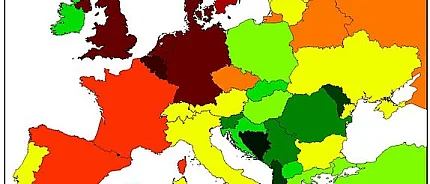Urbanisation
Urbanisation refers to the spread of urban lifestyles and behaviour. Urbanisation refers to the increased migration of the population from villages to cities, resulting in an increase in population density in conurbations.
Consequences of urbanisation for logistics
According to a study by the Frost & Sullivan Visionary Innovation Group, expenditure in urban logistics will double by 2025, largely due to urbanisation. According to the study, the costs will then amount to around EUR 4.601 trillion (EUR 5.980 trillion). Euros (5.980 trillion dollars). Efficient and effective freight transport will become increasingly important in this context.
The negative consequences of urbanisation are
- a high volume of traffic, which will most likely lead to many traffic jams
- wasted time that people will spend waiting in vehicles
- high costs for fuel resources and transport, and
- polluting exhaust fumes generated by fuel consumption.
In addition, it is becoming increasingly difficult to find parking spaces in cities. Large vehicles in particular, such as lorries, have difficulty finding suitable parking bays.
Frost & Sullivan Senior Research Analyst, Ms Archana Vidyasekar, names future opportunities in development to counteract the negative aspects: “In the future, intelligent models for urban logistics will be developed. […] Each city needs to develop unique and customised options with its private logistics providers to mitigate potential risks in urban freight transport.” To successfully handle the transport of 500 million deliveries a day in 2025, Ms Vidyasekar says that “logistics companies need to consolidate their deliveries and polarise their fleets. […] In order to distribute their deliveries, companies will integrate the so-called hub and spoke model into logistics”. The hub and spoke model describes a transport system in which the end nodes are connected via central hubs.
Ms Archana Amarnath, Programme Manager of Frost & Sullivan’s Visionary Innovation Group, reports on lockers that are used in the UK logistics market. According to Ms Amarnath, there will be more distribution points than distribution centres in the future, as consolidation, bundling, route planning and scheduling are becoming increasingly important.
In order to achieve decentralised warehousing, local retailers can be integrated into the cooperation between a logistics service provider and the operator of an online shop.
You can find more information on this under e-commerce retailer integration – retailer search.
Teaser image: TTomLL.
